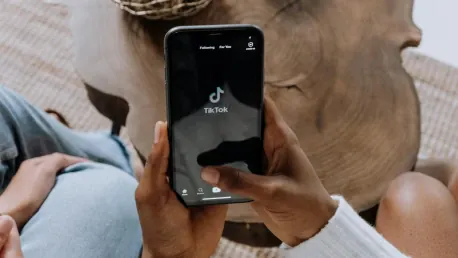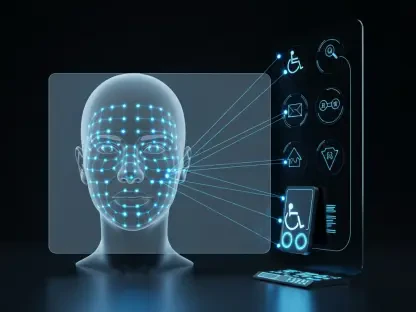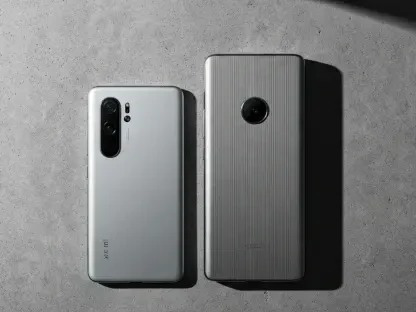TikTok started as a global version of the Chinese app Douyin. In less than six years, its strategy based on a short video format was not only widely accepted but became deeply ingrained in American consumer culture. The fun platform continues to impact trends and change how people interact with social media and brands. However, a threat looms over the platform’s positive track record. Due to recent national security concerns, Congress passed a law that could ban the app unless its Chinese parent company sells its stake. Both the company, ByteDance, and TikTok have filed lawsuits on First Amendment grounds.
The platform may be facing uncertain times, but its influence is still strong, perhaps even unmatched at the moment. For example, last year, interest in bright pink blush and brown lipstick increased significantly after they appeared in TikTok videos featuring “cold girl” and “latte” makeup looks. Similarly, TikTok has played a significant role in popularizing various clothing trends with unique names or easy food tricks. The “girl dinner” trend has taken the Internet by storm, which means content creators and their patrons are making a lot of money from these hashtags.
Many TikTok fads only last a short time, but even a very short-lived frenzy can impact businesses. More than 170 million Americans who use TikTok are mostly under 30, a key demographic for retailers.
Shoppers may be influenced by a cute, interesting, educational, or shocking video without knowing the backstory of a popular product. So, let’s delve deeper into the technology behind TikTok. Only when we understand how its recommendation engine works can we begin to grasp the platform’s unique influence on social media and answer the question — How long will TikTok’s influence last?
What is so special about TikTok’s technology
The US demands that ByteDance, the Chinese owner of TikTok, sells the app’s US assets or face a nationwide ban. The algorithm used by TikTok is a major part of ByteDance’s operations. Reports suggest that ByteDance would rather shut down the app than sell it. China’s export laws give it approval rights over the export of algorithms and source codes, which complicates any effort to sell the app. Academics and former company staff have noted that the success of TikTok globally is attributed not only to the algorithms but also to how it works with the short video format.
Before TikTok became popular, people thought that a successful social media app relied on technology that connected users with their friends, like Meta’s Facebook and Instagram. But TikTok proved that an algorithm based on understanding a user’s interests could be even more effective. Unlike Meta, TikTok’s algorithm focuses on learning about a user’s interests rather than their social connections. TikTok’s CEO Shou Zi Chew and other executives emphasized this approach, calling it based on “interest signals”.
Catalina Goanta, an associate professor at Utrecht University, explained that while other apps are based on the same recommendation system, TikTok is unique in terms of design and content. Its complex algorithm is more dynamic and is capable of tracking changes in users’ preferences and interests over time. Experts say it is so precise that it can track what a person behind the account may like during specific times of the day.
These features seem like they came out straight out of “Black Mirror”, allowing the platform to learn about user preferences much faster than YouTube, for example. In correlation to all other platforms and content formats, TikTok can gather data about a user every couple of seconds. Compare that with YouTube, where the algorithm may take around 10 minutes to collect the same amount of data.
Exploring the Depths of TikTok’s Recommendation Engine
TikTok rose to popularity thanks to this customized recommendation system we explained above. Unlike Instagram, which connected accounts based on personal connections, TikTok focused on building a machine learning program that tracks users’ interests to match people with similar hobbies, preferences, tastes, etc. It also changed the game by encouraging content creators to share unfiltered videos, fostering authenticity that was lacking in similar platforms like YouTube and Instagram, which boasted more polished looks at the time. This genuine approach helped creators and brands build closer relationships with their followers.
That is how TikTok’s inner mechanics recommend a significant amount of videos that are outside of users’ known interests. Recently, a group of American and German researchers found that the algorithm exploits user interests in 30% to 50% of the recommended videos. Their study analyzed data from 347 TikTok users and five automated bots in a paper titled “TikTok and the Art of Personalization”. They noticed that the algorithm may “push” a lot of similar videos to incite interest or maximize user retention.
TikTok’s Hashtag Strategy
Even if someone’s been living under a rock, they have most likely seen at least one hashtag. Hashtags are extremely valuable on TikTok, where brands and creators grew at astronomical speeds thanks to well-positioned and well-timed hashtags on popular trends and challenges. Big brands gain a lot of attention and reputation through hashtags that encourage user-generated content. Niche hashtags are great for targeting specific audiences, unlike Instagram where they have almost completely lost their meaning. For example, using #outdoorrunning, or #vegetariandinner can quickly reach an interested audience for your content.
When it comes to TikTok, its hidden mechanics effectively encourage its users to create public groups using hashtags, allowing empowered tracking and understanding of its users’ behavior, interests, and ideology. However, if TikTok gets banned in the US, domestic tech giants could technically replicate the platform with their own products. Recreating the user culture TikTok has cultivated over the years is a different story.
The Controversial Side of TikTok: Influencer Earnings and Criticisms
When TikTok first launched, it attracted influencers from other platforms by paying them. Even those with just 1,000 followers could earn money by promoting different products in their short-form content. Those with at least 10,000 followers and a minimum number of video views had opportunities to participate in programs that pay them based on viewership.
TikTok has received criticism for being addictive and encouraging excessive scrolling and unnecessary spending, as well as promoting harmful behavior, such as young girls engaging in skincare routines meant for older women.
Additionally, some people say that TikTok creators often create fake trends or repackage older looks with catchy names. However, despite the critics, there are many fans who hope the platform doesn’t disappear.
“The impact has been almost immeasurable,” – said Christopher Douglas, Senior Manager of Strategy at the influencer marketing agency Billion Dollar Boy.
Conclusion
While we cannot say for sure when the TikTok craze might fade, the app’s innovative technology and unique content maneuvers have cemented its place in the social media landscape for the foreseeable future. The platform boasts a personalized recommendation engine that prioritizes the most popular online advertising format and incites dynamic user engagement. It was a powerful force in shaping trends and consumer behavior when it emerged and is still capable of meeting demands as they come up. Despite potential legal challenges and criticisms, its influence remains strong, especially among younger demographics. As long as TikTok continues to evolve and adapt to user preferences, its impact on culture, fashion, and commerce will likely endure.









